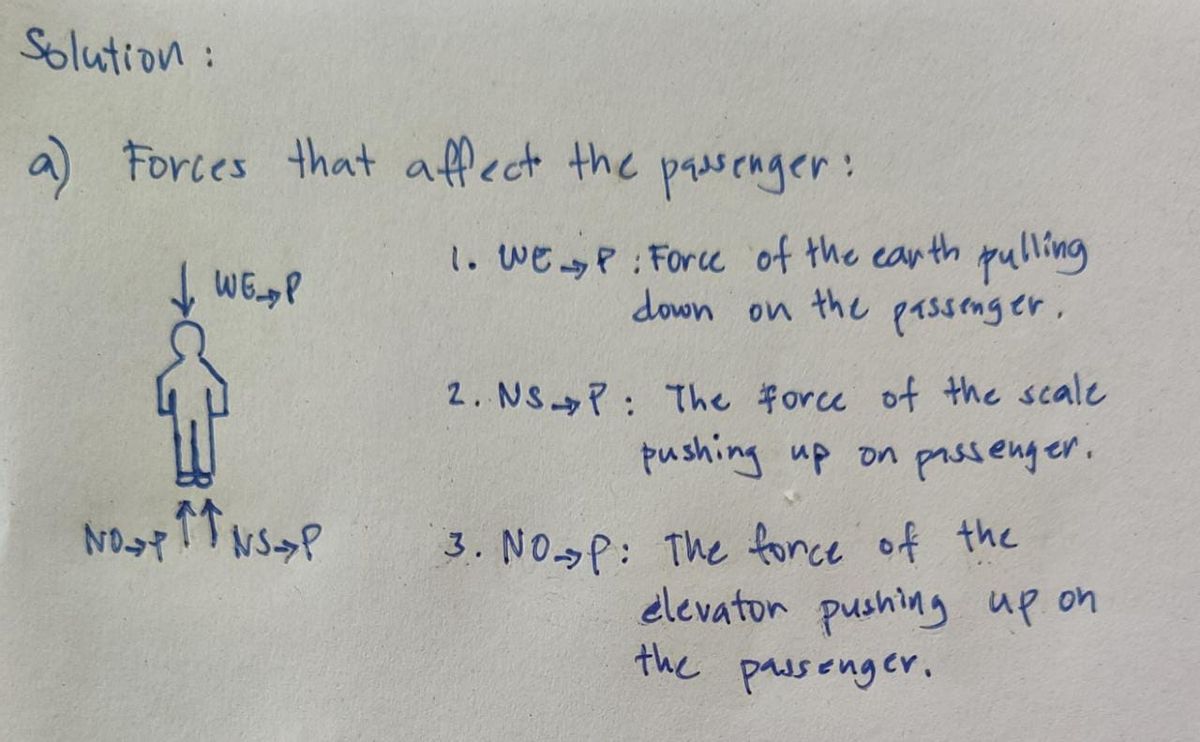A passenger is standing on a scale in an elevator. The building has a height of 500 feet, the passenger has a mass of 80 kg, and the scale has a mass of 7 kg. The scale sits on the floor of the elevator. (It is an Otis elevator, so we will label it as "O" so as not to confuse its forces with those caused by the earth.) You may take g = 10 N/kg. For doing this problem it might be useful to start by drawing free-body diagrams for the passenger and the scale.
Consider the vertical forces acting on the passenger and the scale
- WE→P: The force of the earth pulling down on the passenger (weight).
- WE→S: The force of the earth pulling down on the scale (weight).
- NP→S: The force of the passenger pushing down on the scale (normal).
- NS→P: The force of the scale pushing up on the passenger (normal).
- NO→S: The force of the elevator pushing up on the scale (normal).
- NO→P: The force of the elevator pushing up on the passenger (normal).
Which of these forces affect the motion of the passenger? Select all that apply.
Which of these forces affect the motion of the scale? Select all that apply.

Trending now
This is a popular solution!
Step by step
Solved in 2 steps with 2 images









